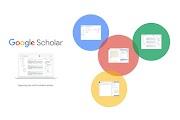Results
Our examination uncovers the inquiry hit tallies of ASEBDs. We found that QHC sizes differed altogether from the littlest (CiteSeerX) containing 8,401,126 hits to the biggest (Google Scholar) containing 389,000,000 hits. The outcomes demonstrate that dependent on QHC, Google Scholar, WorldWideScience, and ProQuest (choice of 19 databases, see "Reference section 1") are by a wide margin the biggest frameworks giving academic data, with each containing around 300 million records. This driving gathering is trailed by BASE, Web of Science (determination of ten databases, see "Informative supplement 1"), and EbscoHost (choice of 25 databases, see "Reference section 1") each containing in excess of 100 million records; to some degree littler ASEBDs are Scopus, Web of Science (Core Collection), and Q-Sensei Scholar each containing around 60 million records. On account of those suppliers connecting numerous databases—EbscoHost, ProQuest, and Web of Science—think about that the QHC mirrors a choice of databases, and thusly, their QHCs are probably going to be higher when every accessible database of a supplier are chosen without a moment's delay.
Two of the 12 ASEBDs—AMiner and Microsoft Academic—didn't report numbers reasonable for question-based size estimation. Milner just reports QHCs of up to 1000 hits making it difficult to recover real QHC information. So also, Microsoft Academic doesn't report informational collections surpassing 5000 records since its relaunch in 2017. Prior examinations on Microsoft Academic were as yet ready to report size numbers through straightforward inquiries (e.g., Orduña-Malea, Ayllón, et al. 2014; Orduña-Malea, Martín-Martín, et al. 2014).
We found that the vast majority of the inquiry varieties we utilized demonstrated effective in recovering the most extreme QHCs for some ASEBDs. No question technique restored the most elevated QHC all things considered. Most ASEBDs restored the most elevated QHCs by means of "direct questions" of wide time ranges (multiple times) or with image inquiries (multiple times). The bullet (*) was the best image in recovering the greatest QHCs. In three cases—Google Scholar, ProQuest, and Web of Science—two strategies all the while created a similar most extreme QHC. Neither the single terms "an" and "the" nor character and number mixes gave the greatest QHC in our investigation. Just for one database (Scopus) did a blend of words demonstrate fruitful in recovering a most extreme QHC, connoting that for this database alone a more drawn out pursuit string really implied more recovered records. For this situation, we along these lines iteratively extended the inquiry string to check whether the most extreme QHC could be additionally expanded. To be sure, a blend of the best 100 terms, all digits, and the English letters in order expanded the QHC by nearly 2% to 72 million records. To avoid a potential language inclination, we also extended the question with Russian and Chinese letters, however, couldn't discover any distinction in most extreme QHC. Table 3 displays the point by point results.
Two of the 12 ASEBDs—AMiner and Microsoft Academic—didn't report numbers reasonable for question-based size estimation. Milner just reports QHCs of up to 1000 hits making it difficult to recover real QHC information. So also, Microsoft Academic doesn't report informational collections surpassing 5000 records since its relaunch in 2017. Prior examinations on Microsoft Academic were as yet ready to report size numbers through straightforward inquiries (e.g., Orduña-Malea, Ayllón, et al. 2014; Orduña-Malea, Martín-Martín, et al. 2014).
We found that the vast majority of the inquiry varieties we utilized demonstrated effective in recovering the most extreme QHCs for some ASEBDs. No question technique restored the most elevated QHC all things considered. Most ASEBDs restored the most elevated QHCs by means of "direct questions" of wide time ranges (multiple times) or with image inquiries (multiple times). The bullet (*) was the best image in recovering the greatest QHCs. In three cases—Google Scholar, ProQuest, and Web of Science—two strategies all the while created a similar most extreme QHC. Neither the single terms "an" and "the" nor character and number mixes gave the greatest QHC in our investigation. Just for one database (Scopus) did a blend of words demonstrate fruitful in recovering a most extreme QHC, connoting that for this database alone a more drawn out pursuit string really implied more recovered records. For this situation, we along these lines iteratively extended the inquiry string to check whether the most extreme QHC could be additionally expanded. To be sure, a blend of the best 100 terms, all digits, and the English letters in order expanded the QHC by nearly 2% to 72 million records. To avoid a potential language inclination, we also extended the question with Russian and Chinese letters, however, couldn't discover any distinction in most extreme QHC. Table 3 displays the point by point results.





0 Comments